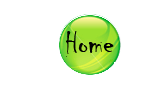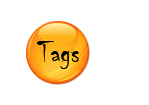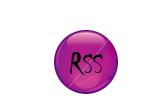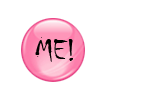3. DIY craft projects
Use as holiday ornaments
Decorate your Christmas tree in style! Hang CDs shiny side out to create a flickering array of lights -- or paint and decorate the label side to create inexpensive personalized ornaments. For variety, cut the CDs into stars and other shapes with sharp scissors. Drill a 1/4-inch (6-millimeter) hole through the CD and thread ribbon through to hang.
Make wall art in teen's room
Old CDs make inexpensive and quirky wall art for your teenager's room. Attach the CDs with thumbtacks and use them to create a border at the ceiling or halfway up the wall. Or let your teen use them to frame his or her favorite posters.
Make artistic bowls
Looking for a funky, decorative bowl? Place a CD in the oven on low heat over a metal bowl until the CD is soft. Wearing protective gloves, gently bend the CD into the shape desired. Seal the hole by gluing the bottom edge to another surface such as a flat dish using epoxy or PVC glue. Don't use the bowl for food.
Make a decorative sun catcher
Sun catchers are attractive to watch, and all you need to make one is a couple of CDs. Glue two CDs together, shiny side out, wrap yarn or colored string through the hole, and hang them in a window. The prism will make a beautiful light show.
Create a spinning top
Turn an old CD into a fun toy for the kids (and adults too!). With a knife, make two slits across from each other in the CD hole. Force a penny halfway through the hole, and then spin the CD on its edge.
Make a CD clock
Old CDs can be functional! Turn a disc into a funky clock face for clockwork sold by arts-and-crafts stores. Paint and design one side of the CD and let it dry. Write or use stickers to create the numbers around its edge. Assemble the clockwork onto the CD.
Cover with felt and use as coasters
CDs can help to prevent those unsightly stains from cups left on the table. Simply cut a round piece of felt to fit over the CD and glue it onto the label side of the CD so that the shiny side will face up when you use the coaster.
Make invitations
If you're having a party, you can use them as invitations. Write down locations, names, phone numbers, etc. on the shiny part with a permanent marker (might need a few layers of the color)
Paint Palette
If you're an artist, use the small circular discs as paint palettes. They're easy to wash off and you can even use a few at a time.
Game Pieces
Make a large checker board with the spots the size of the CD-ROMs (eight squares by eight squares). Mark 12 CD-ROMs with a red "X" using a red marker and 12 CD-ROMs with a black "X" with a black marker. Kids will love to play a "high-tech" game of floor checkers.
Mobiles
I painted old CD's with craft paint, added stickers of all kinds, and drilled a hole and made a CD Mobile. When the wind blows them, the shiny side gives off brilliant colors and yet it is neat to see the other creative side. If you want, you can add bells, or whatever on bottom for chime effect. Fun to do!
Wind Chimes
Glue two CD's together using Tacky Glue. Let dry. Drill one tiny hole in top and five or six holes along bottom. Use permanent magic markers to decorate both sides of CD's. Draw a simple design with a black marker and fill in with the colored markers. Hang beads or metal rods from bottom holes using floss or fishing line. Tie a piece of same in top hole and make a loop for hanging. You can also decorate these C.D.'s with sequins or beads instead of the magic markers.
Bird Treat
Coat them with peanut butter or bacon grease, dip in bird seed, run yarn through the hole in the middle and attach to a tree branch.
Use as template for perfect circle
Need to draw a perfect circle? Forget tracing around cups or using cumbersome compasses. Every CD provides two circle sizes -- trace around the inner hole or the outer circumference.
Mosaics
Great for an old notebook that needs a new look. Break the CDs up into about 1/4 to 1/2 inch pieces. Arrange the pieces on the cover in a mosaic tile pattern. Use hot glue or spray adhesive to put them in place. This could look great in any mosaic pattern -- on picture frames, hat boxes, etc.
Party Decorations
Paint with black high gloss spray paint and then apply circles around the center to imitate 45 records with fun play-on- words made-up song titles and artists to go along with a 50's dance theme
Halloween Costume
Put CD's on old clothes for a high tech costume.
Teacher's Gifts
Painting apples on them, A B C, and 1 2 3. Use gold foil ribbon, drill a hole on each side at top, place beads on it, spelling teacher.
CD Psychedelic Mirror
Glue CDs onto a piece of cardboard, one right next to the other (shiny side up). Decorate the edges of the cardboard and attach it to the back of a door.
Postcards
Stamp a cute design on a piece of sticker paper and apply to the printed side of the CD. Use a permanent marker. to address on the shiny side... add .44 cents postage and drop in the mail. No envelope needed...and it's lots of fun!
Name Tags
Spray paint CDs. Hang them on strings with some beads. Write the kids names on them and hang them around their necks. They get to put a sticker on the CD each time they come. I also put their name on both sides so no matter how they swing, I still have a name.
(squidoo.com)

























































